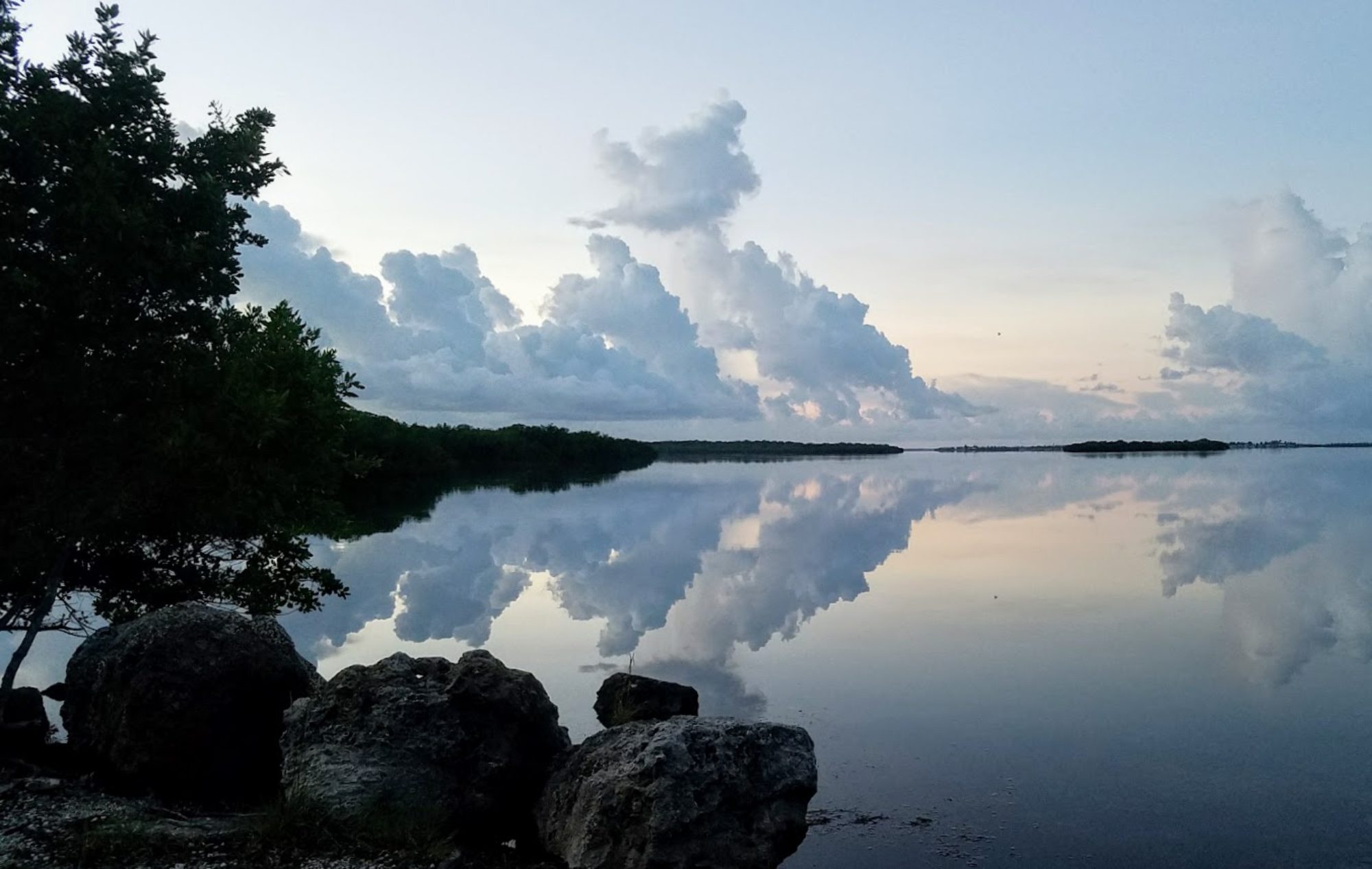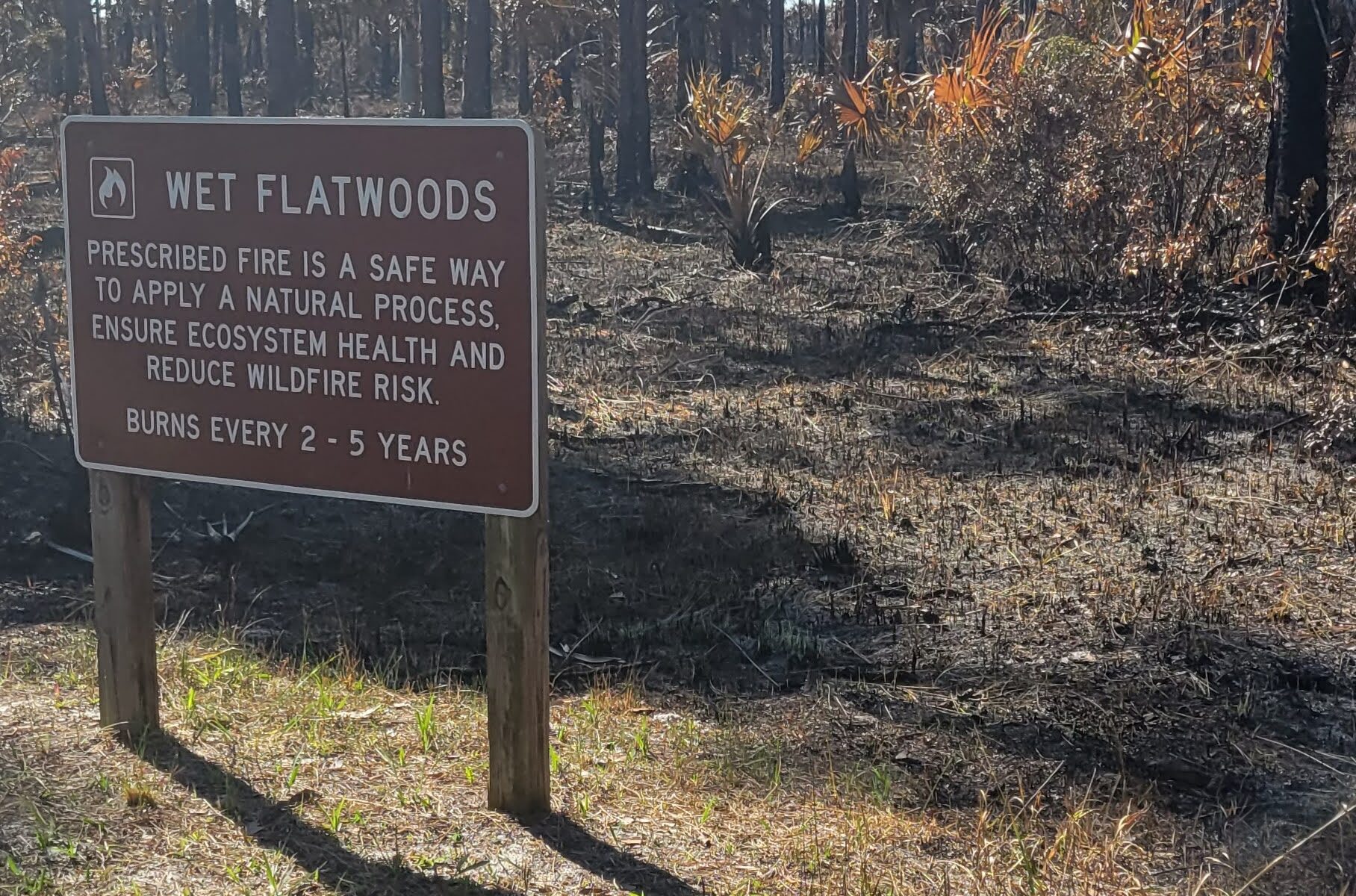On our trip to Collier Seminole State Park last year, Steve and I hiked through an area that had just been reopened after a prescribed burn. Parts of the forest floor and many tree trunks were still smoldering! Surprisingly, though, the palmettos and ferns were already putting up new shoots. I guess nature is going to keep going no matter what her human component gets up to.
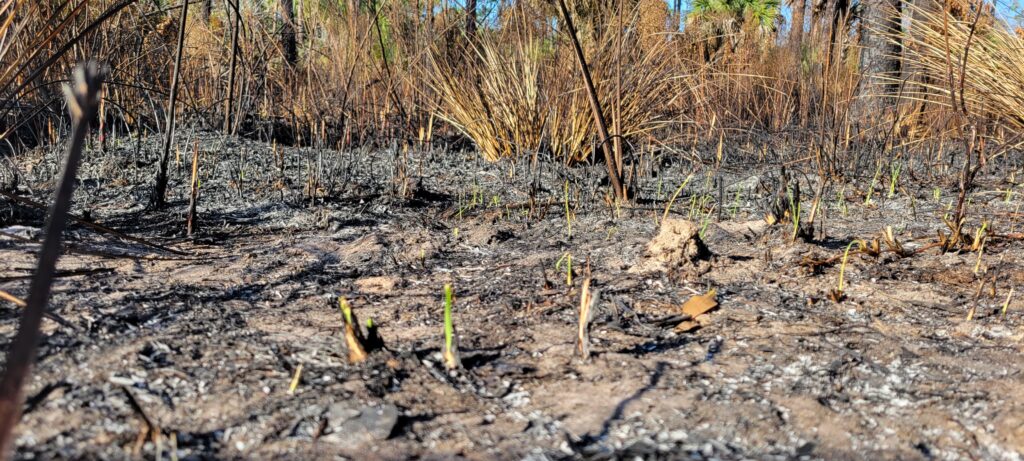
Prescribed Burn
You may know them as “controlled burns,” but lately, “prescribed burn” has become the preferred term. It’s just a new name for a fire that is lit intentionally by local authorities to meet specific objectives while protecting the safety of people and property. The new name recognizes the chance that the fire could, in fact, become uncontrolled.
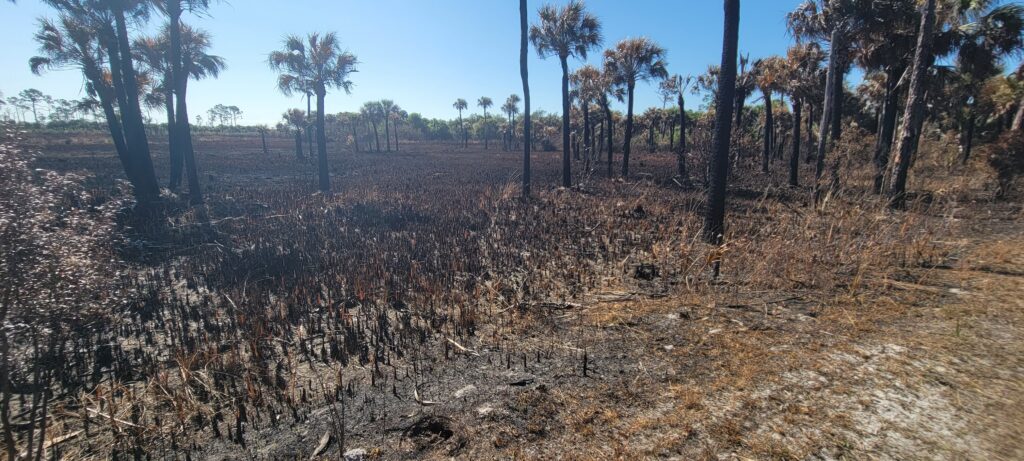
Carefully Thought Out
The prescribed burn is meant to decrease harmful conditions and give the a habitat the best chance of health. A prescribed burn is carefully planned to minimize extreme wildfire risk. The plan takes into consideration factors including temperature, humidity, wind, and moisture. Because these can change from day to day, the burn plan must be flexible. Time of year can also be a factor, and land managers may burn to improve the germination rate of some plants or stimulate blooming of others.
It’s Nothing New!
It’s all science, but far from a modern technique. In fact, indigenous peoples have been practicing using fire to manage land for a very long time. According to the National Park Service, indigenous people consider fire as medicine. “When you prescribe it, you’re getting the right dose to maintain the abundance of productivity of all ecosystem services to support the ecology in your culture” (Roos, 2021, cited here).
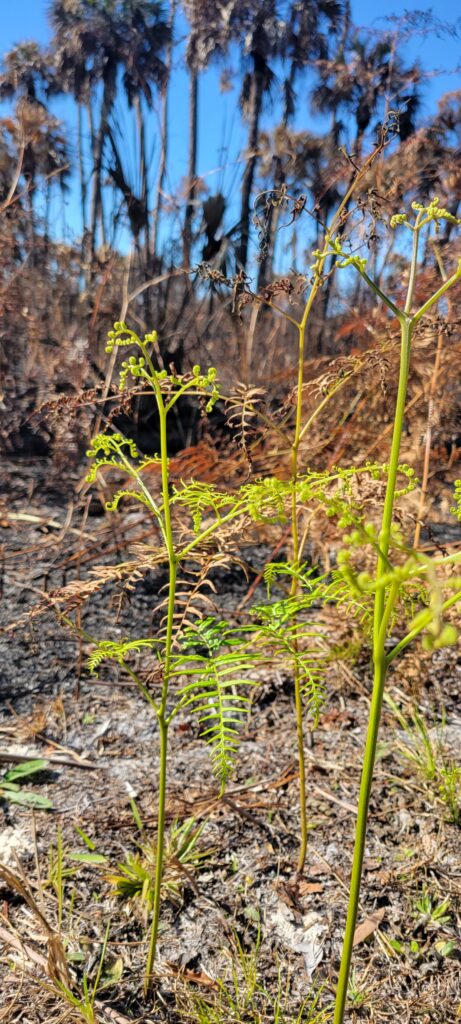
Benefits of Prescribed Burns
Prescribed burns offer many benefits. They can lower the risk of more dangerous wildfires. They increase plant diversity and control invasive species. In general, they reduce competition for resources and can improve wildlife habitat.
Lowered Risk
Undergrowth, dead leaves and fallen branches are cleared away by prescribed burns. This reduces the amount of fuel available to a fire caused by natural causes like lightning, or artificial causes like careless human activity.
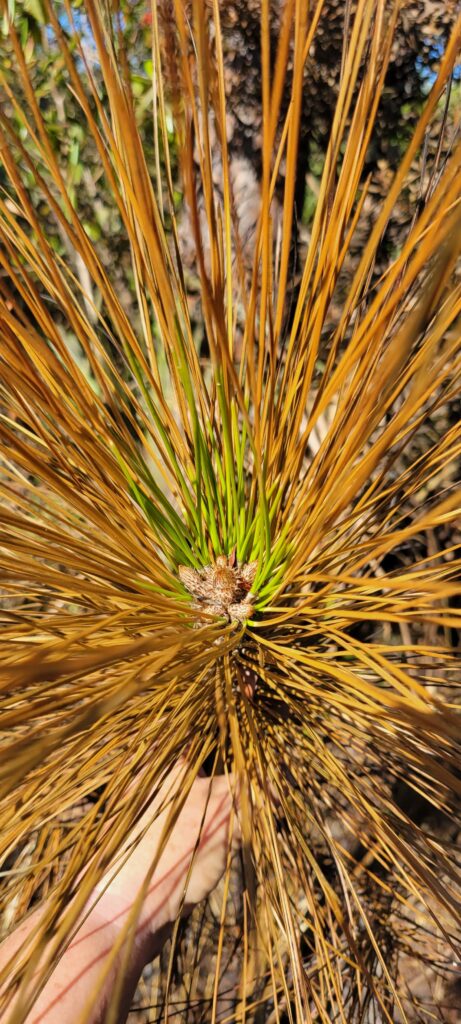
Increased Diversity
Interestingly, while prescribed burns decrease the understory coverage, they increase diversity and density among understory plants. Here’s a great article with several examples. Fire can help rejuvenate a forest by returning nutrients to the soil.
Controlled Invasive Species
Prescribed burns are sometimes used to restore pastures that have been overtaken by invasive plants. It is especially effective when used against plants that do not resprout when the top of the plant is removed. In Florida, many native plants have evolved to deal with fire as a part of their life cycle, so they can more easily withstand a burn than a non-native plant that has not the same evolutionary advantages.
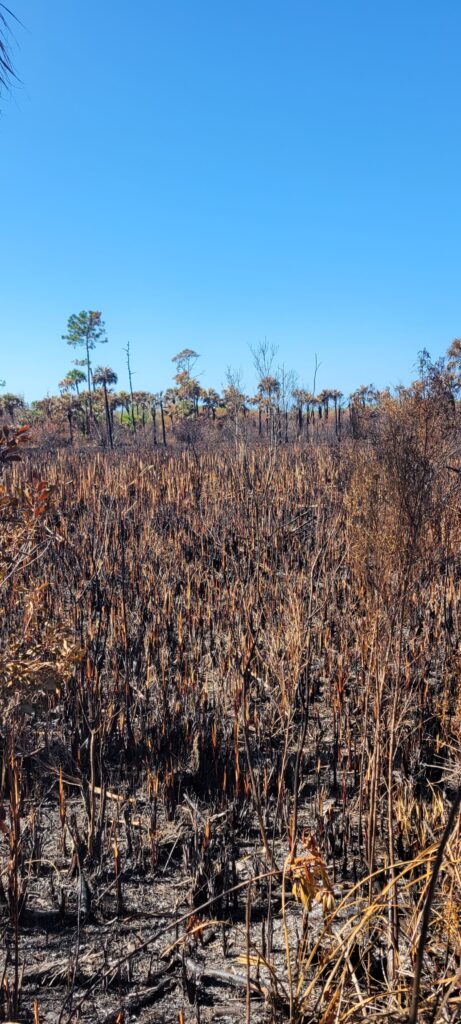
Reduced Competition
Plants adapted to Florida’s fire ecology quickly recover from burns and benefit from reduced competition for resources.
Improved Habitat
Some plants require regular burning to thrive. Fire stimulates these native species, and maintains the open character of pine forests.
Lowering Risk of Dangerous Wildfire
Clearing the forest floor of dead leaves and other debris can help prevent a wildfire.
Because Florida relies on prescribed burns in state parks, state forests, and other public lands, hikers and campers should be aware of where planned burning activity will occur. Here’s a great resource to stay safe. Avoid any area where a burn is planned.
